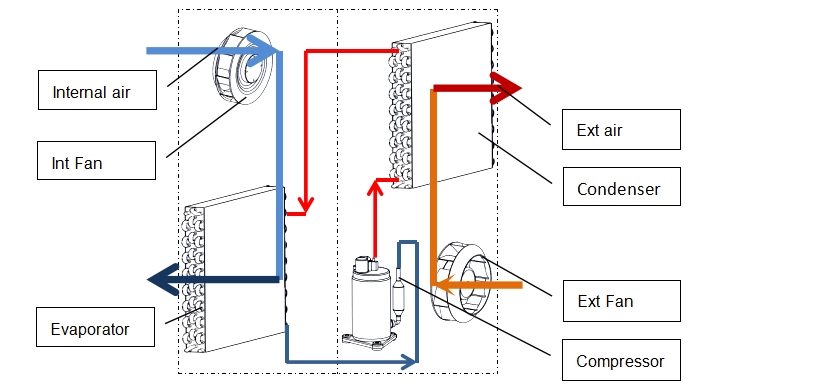Applications of Outdoor Enclosure Air Conditioner
Outdoor Enclosure Air Conditioner is essential for maintaining optimal temperatures for control panels and electrical components across various industries. These systems prevent overheating, protect equipment, and ensure smooth operations. Below are key applications:
1. Industrial Automation
Outdoor Enclosure Air Conditioner regulates the temperature of control panels in automated systems, safeguarding components like PLCs, sensors, and motor drives from overheating.
2. Electrical Cabinets and Enclosures
5In electrical cabinets, outdoor electrical cabinet air conditioner cools critical components such as circuit breakers, switches, and transformers, ensuring reliable operation and protection from heat damage.
3. Telecommunications
Outdoor Enclosure Air Conditioner cools control panels for network routers and switches, helping maintain network stability and prevent failures caused by overheating.
4.Renewable Energy Systems
In solar and wind power, Outdoor Enclosure Air Conditioner regulates temperatures in control panels for inverters and battery management systems, ensuring consistent system performance.
5. Railways and Transportation
In rail systems, Outdoor Enclosure Air Conditioner prevents overheating of control panels for signaling and train control, ensuring safe and efficient operations.
6. Oil and Gas Industry
On offshore rigs and in processing plants, Outdoor Enclosure Air Conditioner protects control panels from extreme temperatures, ensuring stable operations in harsh environments.
7. HVAC Systems
Outdoor Enclosure Air Conditioner cools control panels for chillers and air handling units, ensuring consistent operation of HVAC systems in commercial and industrial settings.
8. Automotive Industry
In automotive manufacturing, Outdoor Enclosure Air Conditioner prevents overheating of control panels in robotics and assembly lines, reducing downtime and maintaining production efficiency.
9. Medical Equipment
For medical devices, Outdoor Enclosure Air Conditioner ensures the temperature stability of control panels, preventing heat-related failures and ensuring accuracy.
10. Food and Beverage Industry
In food and beverage production, Outdoor Enclosure Air Conditioner cools control panels in refrigeration units and automated packaging systems, ensuring efficient operations.
Conclusion
Outdoor Enclosure Air Conditioner plays a crucial role in protecting electrical systems from heat across industries. It helps maintain equipment reliability, reduce downtime, and extend the lifespan of sensitive components.

























